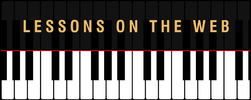|
Syncopated rhythm is really fun once you learn how to count it. It’s a bit like rubbing your head and patting your tummy at the same time...it kind of mixes your brain up. But your brain can handle it! You just have to get yourself in a sort of “offbeat” kind of mood and you’ll be fine. J In 4/4 time, we’re counting 4 quarter beats in each measure. Have you ever noticed that you can feel the main pulse of each beat in a measure? What those pulses are also known as are natural accents in the rhythm which simply dictate those main beats. The first beat/natural accent note is the strongest, the 3rd one is the next strongest, and the 2nd and last notes are the least strong. However, they are all strong in the sense that they establish a particular beat in the measure and the accents help us to feel where those beats come. To understand syncopation it’s important to connect with those natural accent points in each measure. It’s going to require us to move the accents off of the strong beats, however. We can do this by simply ignoring or getting rid of the very first beat, which will move our accent over to the offbeat, Try replacing the first 8th beat of a measure with an 8th rest, and then put an 8th note right after the rest. Then follow that with 3 quarter notes. This gives us a measure of 4/4 time with a quarter note getting the beat. We’re going to count it though, by saying 1& 2& 3& 4&…we’re subdividing the quarter beats into 8th beats. Now what will happen is that the accent will fall on the 8th note, (which is the offbeat) instead of the rest which replaces the first ½ of beat one. It’s almost like 1& 2& 3& 4&…all of the accents are on the “&”s, not the first part of the beat or the number part of the counting. You can usually identify syncopated rhythms in your music by figuring out where the accents are falling in each measure…are they on the main part of the beat or the weaker part of the beat? As we know…syncopated rhythms will have the weaker beats accented. You can easily tell this also by seeing if the notes actually fall right under the numbers. If they do, then your rhythm probably isn’t syncopated, but if they don’t, then it probably is. Another type of syncopated rhythm is called suspended syncopation and this is where you have a note tied over into the beginning of the next measure. Now remember, we have natural accents over each main beat. But in this case, the 1st beat of the next measure is part of the tie and won’t receive and accent, so the accent is misplaced and won’t start until the 2nd beat. The second type of syncopated rhythm we’re going to talk about is even note syncopation and this occurs in a 4/4 time signature rather than a 4/4 time signature as in the previous examples. This type of syncopation simply involves moving the main accent of the 3 accented notes from the first note to the second note. You aren’t really replacing beats but simply moving the strongest beat over one note rather than having it start on the first note. You will encounter each of these types of syncopation in your piano playing and once you learn how to connect with those natural accents in the rhythm and how to move them according to the syncopation, you’ll have it down! Spend some time watching this video so you can hear and see examples of each of these types of syncopation and it will help you play them on your own. If you like my tips and lessons, you will love the courses over on my website. Whether you are a beginner looking to get a solid foundation to build on or you are looking to take you existing skills to that next level, the online music courses on my website https://www.pianolessonsontheweb.com will help you do just that.
Leave a Reply. |
AuthorMost blogs written by Archives
June 2020
Categories
All
|

 RSS Feed
RSS Feed